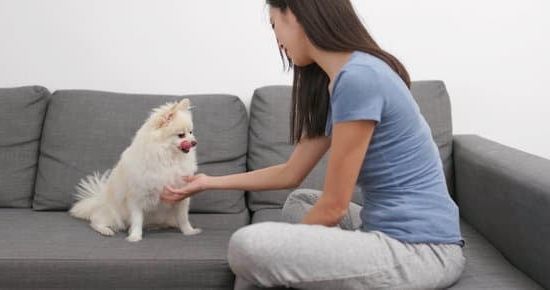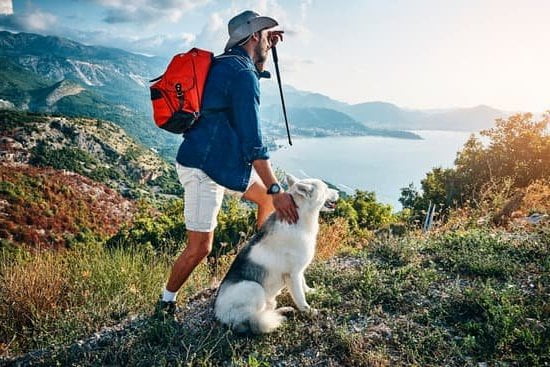Dogs are wonderful companions, but dealing with indoor accidents can be frustrating and unsanitary. In this article, we will explore proven methods to train your dog to stop peeing inside, ensuring a urine-free home and a happily house-trained pet.
Understanding the importance of house training is crucial in establishing a well-behaved and balanced furry friend. We will discuss the benefits of having a house-trained dog, setting realistic expectations for the training process, and why it is essential to address this issue promptly.
House training your dog is not just about maintaining cleanliness; it also contributes to a harmonious living environment. A well-trained dog understands boundaries and rules, making them more pleasant companions. Additionally, a house-trained dog fosters better relationships with family members and visitors who may otherwise be turned off by indoor accidents.
Before diving into training techniques, it is essential to set realistic expectations. Training your dog to stop peeing inside requires time, effort, and consistency. It is not an overnight process but one that demands patience and perseverance. By understanding this upfront, you can approach the task with a positive mindset and avoid frustration along the way.
Now that we have established the importance of teaching your dog to stop peeing inside let’s delve further into our step-by-step guide on how to achieve this goal successfully.
Identifying the Reasons Behind Your Dog’s Indoor Urination
Common Reasons for Indoor Urination
One of the first steps in addressing your dog’s indoor urination is to identify the underlying reasons behind this behavior. There can be several factors that contribute to dogs peeing inside the house, including anxiety, lack of proper training, or medical issues. By understanding these reasons, you can take appropriate measures to address them effectively.
Anxiety is a common reason why dogs may urinate indoors. They might feel anxious due to changes in their environment, separation anxiety when left alone, or fear caused by specific triggers. Lack of proper training can also be a cause for indoor accidents. If your dog has not been taught where it’s acceptable to relieve themselves, they may end up doing it indoors.
Consulting a Veterinarian
While anxiety and lack of training are often the main culprits behind indoor urination, it’s essential to consult a veterinarian if your dog continues to have accidents despite consistent training efforts. Medical issues such as urinary tract infections or bladder problems could be causing your dog’s inappropriate elimination behavior. A veterinarian will be able to assess your dog’s health and rule out any underlying medical conditions that need attention.
Remember that each dog is unique, and the reasons for indoor urination may vary from one individual to another. Identifying the root cause will allow you to implement targeted strategies in your house-training process and ensure long-term success.
Establishing a Consistent Schedule for Outdoor Bathroom Breaks
Creating a Routine and Sticking to It
One of the most crucial steps in house training your dog is establishing a consistent schedule for outdoor bathroom breaks. Dogs thrive on routine, so having a set schedule for when they are allowed to relieve themselves will help them understand where and when it is appropriate to do so.
Start by designating specific times throughout the day for bathroom breaks, such as first thing in the morning, after meals, and before bedtime. Consistency is key here – try your best to stick to these designated times every day, including weekends.
Determining the Appropriate Frequency for Bathroom Breaks
The appropriate frequency of bathroom breaks depends on your dog’s age and breed. Puppies have smaller bladders and need more frequent trips outside compared to adult dogs. As a general guideline, puppies typically need to go out every hour or two during their first few months, while older dogs may be able to hold it for longer periods of time.
It’s essential to observe your dog’s behavior and learn their unique needs. Remember that every dog is different, so be patient as you figure out their individual bathroom needs.
The Importance of Timing and Consistency
Timing is everything when it comes to successful house training. When you take your dog outside for a bathroom break, ensure that you allow them enough time to fully empty their bladder. Be patient and give them ample opportunity to sniff around and find an appropriate spot.
By being consistent with your timing every day, your dog will begin associating those specific times with going outside for elimination purposes. Consistency also applies to where you take them – choose a designated area in your yard or neighborhood that becomes familiar territory for them.
Remember that accidents can still happen even if you have established a consistent schedule for outdoor bathroom breaks. The key is not to get discouraged but instead continue reinforcing good habits through positive reinforcement, as covered in the next section of this article.
Utilizing Positive Reinforcement Techniques During House Training
Positive reinforcement is a highly effective technique that can be used to train your dog to stop peeing inside the house. Unlike punishment-based methods, which can cause fear and anxiety in dogs, positive reinforcement focuses on rewarding desired behavior. By utilizing this approach, you can not only accelerate the training process but also strengthen the bond between you and your furry friend.
One of the most powerful tools of positive reinforcement is rewards and treats. When your dog successfully eliminates outside, make sure to praise them enthusiastically and offer a small treat as a reward. This positive association will motivate them to repeat the behavior in order to receive more rewards. It is important to choose high-value rewards that are especially enticing for your dog, such as small pieces of their favorite food or special treats designated for training purposes.
In addition to treats, praise and encouragement play a crucial role in the training process. Dogs thrive on attention and love nothing more than making their owners happy. Therefore, when your dog eliminates outside, shower them with praise, petting, and affectionate words. This positive reinforcement will reinforce their understanding that peeing outside is a desirable behavior. Remember to use an excited and upbeat tone of voice to convey your enthusiasm.
Consistency is key when utilizing positive reinforcement techniques. Make sure everyone in your household is on board with using this approach consistently throughout the training process. It is essential that everyone offers rewards, praises, and encourages appropriately whenever your dog eliminates outside.
By maintaining consistency, you ensure that your dog comprehends what behaviors are desirable and that there are no mixed signals. With patience, persistence, and adherence to positive reinforcement techniques, you can successfully train your dog to stop peeing inside and create a happy home environment for both of you.
With these strategies in mind for utilizing positive reinforcement during house training, you can effectively teach your dog where it’s appropriate to eliminate while strengthening your bond along the way. Remember that all dogs learn at different paces, so be patient and celebrate even the smallest successes.
By focusing on the positive, you can create a harmonious living environment where accidents inside become a thing of the past. With consistency and dedication, you will soon have a well-trained dog who understands where to pee and a home that remains urine-free.
Implementing Crate Training as an Effective House Training Tool
Crate training can be an invaluable tool when it comes to house training your dog. It helps create a safe and comfortable space for your furry friend while teaching them bladder and bowel control. In this section, we will explore the concept of crate training, how to choose the right crate size, and how to gradually introduce your dog to the crate.
The first step in implementing crate training is choosing the right crate size for your dog. It is important to select a crate that provides enough space for your dog to stand up, turn around, and lie down comfortably. If the crate is too big, your dog may be more likely to use one corner as a bathroom area. On the other hand, if it is too small, it can make your dog feel cramped and uncomfortable.
To make the crate inviting for your dog, add soft bedding such as blankets or towels. This will create a cozy environment that they can call their own. You can also place some toys or chew treats inside the crate to keep them entertained.
Introducing your dog to the crate should be done gradually and positively. Start by leaving the door of the crate open and allowing your dog to explore it at their own pace. Encourage them with treats or praise whenever they show curiosity or step inside. Gradually increase the amount of time they spend inside the crate with short increments each day.
It’s important to note that crates should never be used as punishment or as a way to isolate your dog. The goal is to create a positive association with the crate so that they see it as a safe haven rather than a place of confinement.
| Step | Description |
|---|---|
| Choose the Right Crate Size | Select a crate that allows your dog to stand, turn around, and lie down comfortably. |
| Create a Cozy Environment | Add soft bedding and some toys or chew treats to make the crate inviting for your dog. |
| Introduction to the Crate | Leave the door open and encourage your dog to explore the crate at their own pace, gradually increasing the amount of time spent inside. |
By implementing crate training as an effective house training tool, you are providing your dog with a designated space where they can feel secure while minimizing accidents in the house. It helps teach them bladder and bowel control by associating their elimination needs with going outside.
Remember to always supervise your dog when they are in the crate and never use it as a form of punishment. With patience and consistency, crate training can be a valuable part of establishing good habits in your furry friend’s daily routine.
Supervising and Managing Your Dog’s Indoor Behavior
Supervising and managing your dog’s indoor behavior is a crucial aspect of house training. During the training phase, constant supervision is necessary to prevent accidents and reinforce desired behaviors. This section will explore the significance of supervision, restricting access to certain areas, and utilizing confinement methods to create boundaries for your dog.
One of the key components of successful house training is being able to supervise your dog at all times. When left unsupervised, dogs may have accidents indoors or engage in undesirable behaviors. By keeping a close eye on your dog during the training phase, you can catch any signs that they need to go outside and redirect them to the appropriate bathroom area.
To minimize the chances of accidents occurring, it is important to restrict your dog’s access to areas where accidents are likely to occur. This may include blocking off certain rooms or using baby gates or playpens to create boundaries within your home. By limiting their access, you can better manage their behavior and ensure they only have access to areas where they have been properly trained to eliminate.
In addition to restricting access, utilizing confinement methods such as crate training can be an effective tool in managing your dog’s behavior indoors. Crate training involves introducing your dog gradually and positively associating it with positive experiences like treats and toys. The crate serves as a safe space for your dog when you cannot directly supervise them, preventing accidents and undesired behaviors.
By supervising your dog’s indoor behavior, restricting access, and utilizing confinement methods like crate training, you can effectively manage their behavior during the house training process. Consistency and patience are essential during this stage as it helps establish good habits and prevents setbacks in the training progress. Remember that every dog learns at their own pace, so it is important not to rush the process.
| Benefits of Supervision | Importance of Restricting Access | Benefits of Confinement Methods |
|---|---|---|
| Prevents accidents and reinforces desired behaviors | Minimizes the chances of indoor accidents | Serves as a safe space when unsupervised |
| Allows for immediate redirection to appropriate bathroom areas | Helps manage your dog’s behavior effectively indoors | Prevents undesired behaviors and accidents |
| Aids in establishing good habits and preventing setbacks | Promotes consistency and reinforces training progress | Gives peace of mind when unable to directly supervise your dog |
Effectively Cleaning and Neutralizing Indoor Accidents
Accidents happen, especially during the house training process. When your dog pees inside, it is crucial to clean and neutralize the area effectively to prevent repeat accidents in the same spot. Improper cleaning can leave behind residual odors that can act as a trigger for your dog to continue marking that area. In this section, we will discuss the importance of proper cleaning, recommended cleaning products and techniques, and how to remove the scent effectively.
The dangers of improper cleaning cannot be overstated. If you don’t clean up an indoor accident properly, your dog may detect the lingering scent and associate it with an acceptable bathroom spot. This can halt their progress in house training and create confusion about where they should be eliminating.
When cleaning up an indoor accident, there are several key steps to keep in mind. First, blot up as much urine as possible using paper towels or a clean cloth. Avoid wiping or rubbing the area, as this can spread the urine further into the carpet or flooring. Once you have removed as much liquid as possible, use an enzymatic cleaner specifically designed for pet urine stains and odors.
Enzymatic cleaners are effective because they contain enzymes that break down the proteins in urine, eliminating both the stain and odor at its source. These cleaners are readily available at pet stores and online retailers. Follow the instructions on the product’s label for best results.
In addition to enzymatic cleaners, there are also natural remedies that can help neutralize odors from dog urine. For example, a mixture of white vinegar and water can be used to remove smells from hard surfaces like tile or linoleum floors. Baking soda is another popular natural deodorizer that can be sprinkled on carpets before vacuuming.
By properly cleaning and neutralizing indoor accidents, you’re not only preventing repeat incidents but also ensuring a hygienic living environment for both you and your dog. Remember, consistency is key in house training, so make sure to clean up accidents promptly and thoroughly to set your dog up for success.
Troubleshooting Common Challenges in House Training
House training a dog can sometimes be a challenging process, and it’s important to be prepared for potential setbacks along the way. This section will address some common challenges that dog owners may face during house training and provide tips on how to overcome them.
One of the most common challenges in house training is regression in training progress. It’s not uncommon for dogs to have accidents indoors even after they have learned to go outside. This can happen due to various reasons such as changes in routine, illness, or stress.
If your dog starts having accidents again, it’s important not to get discouraged. Instead, go back to basics and reinforce the training techniques that were successful initially. Provide consistent reminders by taking your dog outside more frequently and praising them when they eliminate outdoors.
Another challenge that dog owners may encounter is submissive or excitement urination. Submissive urination usually occurs when a dog feels anxious or intimidated, while excitement urination happens when a dog gets overly excited or aroused. Both of these behaviors can lead to accidents indoors.
To address this challenge, it’s crucial to approach your dog calmly and avoid any loud noises or sudden movements that might trigger submissive or excitement urination episodes. Additionally, providing plenty of positive reinforcement for desired behavior, including calm greetings and rewards for appropriate elimination outside, can help build confidence and reduce these types of accidents over time.
If you’re struggling with persistent difficulties in house training despite your best efforts, seeking professional help may be beneficial. A professional trainer or veterinarian experienced in behavior modification can provide valuable guidance tailored to your specific situation. They can assess any underlying medical issues contributing to indoor urination problems and suggest targeted strategies to address behavioral challenges.
By troubleshooting these common challenges during the house training process, you’ll increase the likelihood of success and create a positive learning environment for your furry friend. Remember that patience and consistency are key when facing setbacks, as every dog learns at their own pace. With dedication and perseverance, you can overcome obstacles and achieve a urine-free home while building a strong bond with your happily house-trained dog.
Celebrating Success and Maintaining Long-Term House Training
Maintaining long-term house training for your dog is essential to ensure a urine-free home and a happy, well-behaved pet. After putting in the effort to train your dog to stop peeing inside, it is important to celebrate their success and continue reinforcing good behavior. Here are some tips for celebrating success and maintaining long-term house training.
- Gradual Freedom: Once your dog has consistently shown that they can hold their bladder and understand where they should go potty, you can gradually start giving them more freedom around the house. Start by allowing them access to one additional room at a time, always keeping a close eye on them. If accidents start happening again, restrict their access until they demonstrate reliability once more.
- Consistency: Dogs thrive on routine and consistency, so it’s crucial to maintain a regular bathroom schedule even after successful house training. Stick to the established routine of bathroom breaks and make sure they have ample opportunities to relieve themselves outside.
- Positive Reinforcement: Continue using positive reinforcement techniques such as rewards, treats, praise, and encouragement when your dog successfully goes potty outside. This will reinforce their good behavior and motivate them to continue eliminating in the appropriate place.
- Ongoing Supervision: While you’re gradually giving your dog more freedom around the house, it’s still important to supervise them closely until you are confident in their reliability. Accidents can happen even with a well-trained dog, so keep an eye out for any signs that they may need to go outside.
- Maintenance Cleaning: Even after successful house training, accidents may occur from time to time due to various factors such as illness or changes in routine. It’s essential to clean up accidents promptly using recommended cleaning products that neutralize odors effectively. This will prevent repeat accidents in the same spot as dogs are naturally drawn back to areas with residual smells.
By celebrating your dog’s success and maintaining consistent training practices, you can ensure a urine-free home and a long-term happy relationship with your pet. Remember to keep reinforcing good behavior, supervising closely, and addressing any setbacks that may occur along the way. With patience, consistency, and persistence, you can have a well-trained dog who understands where they should go potty consistently.
Conclusion
In conclusion, house training your dog is crucial for maintaining a urine-free home and ensuring a well-behaved and happy canine companion. Through this guide, we have explored various techniques to help you achieve success in house training your dog and prevent indoor accidents.
First and foremost, it is important to understand the reasons behind your dog’s indoor urination. Whether it is anxiety, lack of proper training, or underlying medical issues, identifying the cause will greatly aid in addressing the problem effectively. Consulting with a veterinarian can provide valuable insights into any health concerns that may be contributing to the issue.
Establishing a consistent schedule for outdoor bathroom breaks is key to successful house training. By creating a routine and sticking to it, you can ensure that your dog understands when and where it is appropriate to relieve themselves. Remember to take into account your dog’s age and breed when determining the frequency of these breaks, as well as being mindful of timing and consistency.
Positive reinforcement techniques are highly effective in accelerating the house training process. Shifting from punishment-based methods to rewards such as treats or praise can strengthen desired behavior and motivate your dog to continue learning. Additionally, crate training can be a valuable tool in house training by providing a comfortable and secure space for your dog while minimizing accidents indoors.
Supervision plays an integral role during the training phase. By constantly monitoring your dog’s behavior and restricting access to areas where accidents are likely to occur, you can prevent setbacks and reinforce positive habits. Effective cleaning of indoor accidents is also important in eliminating residual odors that may tempt your dog to repeat their behavior in the same spot.
While challenges may arise along the way, patience, consistency, and persistence are key elements for maintaining long-term success in house training. Gradually allowing more freedom as your dog demonstrates reliability will help solidify their good habits. Following these techniques consistently will not only result in a urine-free home but also contribute to a happier relationship between you and your well-trained dog.
Frequently Asked Questions
How do I stop my dog from peeing inside?
To stop your dog from peeing inside, it’s important to first understand the underlying cause of this behavior. There could be several reasons why your dog is having accidents indoors, including a lack of proper house-training, medical issues, anxiety or stress, or even territorial marking. Start by ensuring your dog has regular and consistent access to the outdoors for bathroom breaks. Take them out frequently and praise them when they eliminate outside.
Supervise your dog indoors and restrict access to areas where accidents are common. Consider crate training as it can help with house-training by teaching dogs to hold their bladder. Clean any indoor accidents thoroughly with an enzymatic cleaner to remove lingering odor that may attract them back to the same spot.
How to get your dog to stop peeing in the house even when you take him outside before bed?
If your dog continues to have accidents inside even after being taken outside before bed, there are a few additional steps you can take. First, ensure that you’re providing ample opportunities for bathroom breaks throughout the day and not just before bed. Dogs have different needs based on age, size, and health condition, so consult with a veterinarian if necessary to determine an appropriate schedule for potty breaks.
Additionally, establish a routine for bedtime – feed your dog earlier in the evening and remove water a few hours before bedtime. Take them outside for one final potty break right before bed. If accidents still occur during the night, consider setting an alarm once or twice during the night to wake up and let your dog out for another bathroom break until they develop better bladder control.
Should you punish a dog for peeing inside?
Punishing a dog for peeing inside is generally not recommended as it can be counterproductive and lead to negative consequences in their behavior and trust towards you as their owner. Dogs do not pee indoors out of spite or to purposely misbehave; rather, it is often due to factors like insufficient training or medical issues that need addressing. Punishment after-the-fact will only confuse your dog as they won’t associate the punishment with the act of peeing indoors. Instead, focus on positive reinforcement and reward-based training methods.
When your dog eliminates outside, shower them with praise, treats, or other rewards to reinforce the desired behavior. If you catch them in the act indoors, interrupt them calmly and then quickly redirect them outside to finish eliminating there. Remember that patience, consistency, and understanding are key elements in successfully house-training your dog.

Welcome to the blog! I am a professional dog trainer and have been working with dogs for many years. In this blog, I will be discussing various topics related to dog training, including tips, tricks, and advice. I hope you find this information helpful and informative. Thanks for reading!





